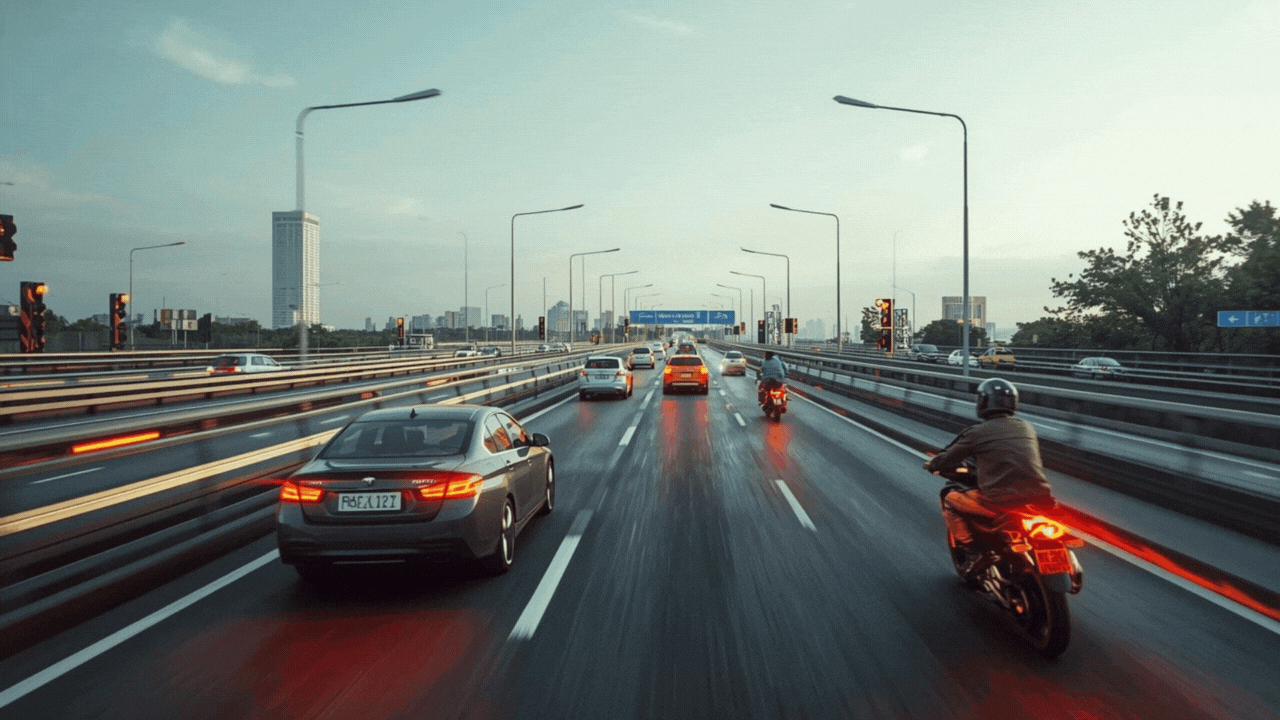Travel Guides & Articles
India to Become Global River Cruise Hub: Government Plans Fifty One New Cruise Circuits by 2027, Boosting Tourism and Local Economies

Tuesday, July 22, 2025
In 2025, India is expected to be home to river cruise tourism, launching an incredible 51 new cruise circuits along 47 national waterways by 2027. These steps, being taken by the Inland Waterways Authority of India (IWAI), herald a move to change the face of our inland water transportation system and make India a hotspot of global river tourism. With the government increasing investments and ramping up existing operations, the country’s wide array of things to do and see — from its culture to its landscapes to its job prospects — are an irresistible pull for tourists. The cruising industry—which originally started off in footings of infancy—has now entered a fresh new phase of development while under the auspices of policy support, state cooperation, introduction of foreign companies, such as the well-known Viking Cruises.
India’s dowdy National Waterways, generally overlooked as tourist attractions, are emerging as the ideal pit stop for regional and international travelers looking to explore India’s rivers, towns and villages. At the center of this new rush for river cruising are the questions we all have: how are these efforts reshaping how we travel; what economic consequences will these new plans have for these destinations; what can we expect for the future of river cruises?
India’s Rising River Cruise Tourism: A Glimpse into the Future
India’s river cruise industry has been experiencing exponential growth, a trend that’s set to continue with ambitious new initiatives. In 2024-25, the number of cruise voyages along National Waterways reached 443, a 19.4% increase from the previous year. This surge reflects the growing interest in inland waterway tourism, which offers a unique way to explore the country’s riverbanks, wildlife, and heritage sites in a relaxed yet enriching environment.
The most striking element of this growth is the Cruise Bharat Mission, an initiative aiming to establish 51 new river cruise circuits by 2027. These circuits will span across 47 National Waterways, cutting through 14 states and 3 union territories. By expanding cruise tourism to lesser-known regions, the mission seeks to make river cruises accessible to a broader audience, especially travelers who may have otherwise missed out on these incredible experiences.
The national government is pushing for investments in infrastructure, including the construction of major cruise terminals in cities like Varanasi, Guwahati, Patna, and Kolkata. Additionally, four terminals are slated for development in the Northeast, with Silghat, Biswanath Ghat, Neamati, and Guijan set to welcome passengers. With these initiatives, the sector aims to increase the number of river cruise passengers from 500,000 to 1.5 million by 2027, positioning river cruising as a key player in India’s booming tourism industry.
What’s Driving the Growth of River Cruises in India?
Several factors contribute to the explosive growth of river cruise tourism in India. First and foremost, the government’s proactive approach to expanding river tourism infrastructure is critical. The IWAI’s continuous efforts in dredging and creating more navigable routes have transformed previously underutilized rivers into viable travel pathways.
Additionally, the increasing interest from international cruise operators is a major catalyst for the sector’s development. The announcement of Viking Cruises’ entry into India, with their flagship vessel, Viking Brahmaputra, highlights the immense global potential of the Indian river cruise market. This 80-passenger vessel, built locally at Hooghly Cochin Shipyard in Kolkata, will begin operations in late 2027, primarily cruising along the Brahmaputra River. Viking’s move into India is seen as a significant step toward positioning the country as a global cruise destination, with the potential to attract more foreign investment and tourists.
Another key factor is the growing demand for eco-friendly tourism options. As global travelers become more conscious of their environmental impact, river cruises are seen as a sustainable alternative to traditional forms of travel. With fewer emissions, a slower pace, and a focus on cultural immersion, river cruises present a responsible choice for travelers seeking sustainable adventures.
Iconic River Cruise Circuits: A Growing Attraction for Travelers
The growing success of India’s river cruise sector is partly due to the allure of its unique and iconic cruise circuits. Among these, the Sundarbans (West Bengal), Brahmaputra (Assam), and Alappuzha (Kerala) circuits have seen increasing footfall, captivating travelers with their natural beauty, rich cultural heritage, and abundant wildlife. These destinations are providing both international and domestic tourists with an opportunity to experience India from an entirely different perspective.
A notable achievement in India’s river cruise history was the MV Ganga Vilas voyage in 2023, which earned its place in the Limca Book of Records as the world’s longest river cruise. The 3,200 km journey, spanning five Indian states and Bangladesh, not only showcased India’s vast river systems but also introduced the world to the potential of Indian river cruises. The voyage was a milestone for India’s cruise sector, offering both local and international travelers a once-in-a-lifetime journey through the country’s historical and cultural heartlands.
Collaborative Efforts and the Role of State Governments
The growth of India’s river cruise tourism is not solely driven by the central government; state governments have also played a vital role in this transformation. Recent MoUs signed between the IWAI and states like Gujarat, Madhya Pradesh, Delhi, and Jammu & Kashmir are paving the way for new cruise routes along rivers such as the Narmada, Yamuna, Jhelum, Ravi, and Chenab.
These regional partnerships ensure that cruise tourism can thrive across India, with local governments offering support through the development of river terminals, tourism infrastructure, and services. For example, Gujarat is working on establishing cruise routes along the Narmada River, while Jammu & Kashmir is focused on developing the Jhelum River as a cruise destination.
Such collaborations will not only make these waterways more accessible to travelers but also stimulate local economies by creating jobs and promoting small businesses along cruise routes. As river cruise tourism expands, it promises to become a major economic driver for rural and regional communities that are often overlooked by traditional tourism sectors.
Future Prospects and What Travelers Can Expect
Looking ahead, the outlook for India’s river cruise tourism is overwhelmingly positive. With significant investments in infrastructure and state-of-the-art vessels, travelers can expect a more luxurious, comfortable, and immersive experience. As international operators like Viking Cruises establish their presence, competition will also lead to better services, more affordable pricing, and greater options for tourists.
India’s government is fully invested in making river cruises a major part of the nation’s tourism landscape. The Cruise Bharat Mission is designed to cater to a diverse range of travelers, offering everything from luxury cruises to eco-friendly expeditions. Travelers can look forward to cruising along India’s picturesque rivers, exploring cultural landmarks, enjoying unique local experiences, and staying in world-class facilities.
Conclusion: River Cruises as India’s Tourism Game-Changer
India’s river cruise industry is on the cusp of a transformation, with the potential to become a global leader in river-based tourism. The combination of government support, international investments, and the development of new cruise circuits will make river cruises an increasingly attractive option for travelers seeking authentic, sustainable, and immersive experiences. With 51 new circuits planned by 2027, the future of river cruising in India looks bright, promising economic growth, new job opportunities, and a greater appreciation for the country’s natural and cultural wealth.
As the sector expands, travelers from around the world will be able to explore India’s most beautiful riverscapes, creating memories that will last a lifetime while contributing to the sustainable future of India’s tourism industry.
Tags: Cruise Bharat Mission, cruise destinations, cruise tourism India, eco-friendly river cruises, Ganga Vilas cruise, India, India cruise growth 2027, India river cruise, Indian National Waterways, Indian river tourism, International tourism, National Waterways, river circuits, river cruise tourism, river tourism India, sustainable tourism, sustainable travel, tourism development, tourism growth, travel trends, Viking Cruises India
Travel Guides & Articles
ITB India 2025 opens in Mumbai showcasing global travel

ITB India 2025, a leading B2B travel trade show organised by Messe Berlin, officially opened today in Mumbai, marking its third in-person edition as a premier B2B trade show and conference for the travel industry.
In a press statement, the organisers say that under the theme The Business of Experience: Curated Travel for Targetted Growth, the event brings together a global gathering of over 400 exhibitors, 600 high-caliber buyers and expects upwards of 8,000 trade visitors from sectors including MICE, leisure, corporate and travel technology.
The statement adds that the three-day event is co-located with MICE Show India and Travel Tech India, focussing on the rising demand for experience-driven travel with emphasis on wellness, culture, cinematic storytelling and adventure tourism.
The organisers say that Madhya Pradesh, Chhattisgarh and Andhra Pradesh have been named the Official Partner States of ITB India 2025, showcasing their diverse landscapes and rich cultural heritage.
It adds that these states are positioned as prime destinations offering authentic and immersive travel experiences beyond the usual tourist trails.
According to the statement, the exhibition features wide international participation across the entire tourism value chain. Key exhibitors include national tourism organizations, top MICE companies, online travel agencies, hospitality brands, travel tech providers and travel agents. Notable exhibitors such as Wonderful Indonesia, Visit Northern Finland, Ministry of Heritage and Tourism Oman, and several others underline the event’s global scope and comprehensive market reach.
The organisers say that running alongside the trade show is the ITB India Conference 2025, featuring more than 40 sessions across four curated tracks, Knowledge Theatre, MICE & Corporate, Travel Tech and Experiential Travel. Industry leaders will discuss India’s growing outbound travel market, innovations in MICE and corporate travel, the transformative role of AI and analytics in travel tech, and the shift towards experiential and purpose-driven travel.
“ITB India 2025 demonstrates the vitality of the Indian and South Asian travel markets, serving as an essential platform for global engagement and collaboration. This year’s edition places a strong emphasis on experience-led travel while fostering fresh opportunities for dialogue, innovation and partnerships across MICE, Corporate, Leisure and Travel Technology. We are delighted to welcome our Official Partner States, Madhya Pradesh, Chhattisgarh and Andhra Pradesh, whose participation brings India’s diversity and cultural depth to the forefront, further cementing ITB India’s position as a gateway to the future of travel,” says Darren Seah, Executive Director, Messe Berlin Asia Pacific and organiser of ITB India, MICE Show India and Travel Tech India.
Travel Guides & Articles
Breaking News Live Updates: IndiGo airline issues travel advisory for Leh, asks passengers to rebook or claim refunds

Orange weather warning for NCR
The India Meteorological Department (IMD) upgraded its weather warning to orange across Delhi and the National Capital Region, urging residents to prepare for heavy showers. Officials said the rainfall was being driven by the monsoon in combination with an unusually active western disturbance, which has also brought downpours to Himalayan states.
Temperatures dropped to 24–25 degrees Celsius, but the fall in mercury did little to ease the problems caused by clogged roads and flooding. Commuters were seen navigating waist-deep water in parts of the city, while pedestrians struggled to move through submerged streets.
Gurugram faces intense rainfall
Gurugram was hit hardest. Between 3 pm and 7 pm, the city received over 100 mm of rain. Stretches near Hero Honda Chowk, Patel Nagar and Signature Bridge were completely inundated. The service lane of the Dwarka Expressway had to be shut as water levels rose sharply, and the expressway’s drainage system collapsed under pressure.
By 6 pm, more than 90 mm of rainfall had been recorded, leaving vehicles stranded and traffic backed up at the Delhi-Gurugram border along National Highway-8. The downpour, which lasted for hours, paralysed key roads connecting Dwarka to Kherki Daula and several sectors of Gurugram.
Work from home and online classes advised
The District Disaster Management Authority (DDMA) asked private offices and institutions to shift to remote work on Tuesday. It also directed schools to move to online classes. In its advisory, the Gurgaon deputy commissioner said the order aimed to reduce traffic jams, ensure public safety, and minimise disruption after the city received over 100 mm of rain in just five hours.
The circular, sent late on Monday to the District Information and Public Relations Office, also tasked education officers with ensuring full compliance by both government and private schools.
Officials urged residents to stay indoors as much as possible and avoid unnecessary travel. They advised those who needed to step out to follow weather updates closely. Emergency services were placed on standby while authorities continued to assess the situation.
Rain impact across Delhi
Several parts of Delhi, including Akbar Road near India Gate, were pounded by rain. While waterlogging was less severe than in Gurugram, traffic slowed to a crawl during the evening rush as people left their offices.
Authorities confirmed that traffic restrictions on Loha Pul were necessary to prevent risks from the swelling Yamuna.
Travel Guides & Articles
Which Indian Cities Are The Most Dangerous for Road Travel? Check Top 5 in 2023 Report | India News

India’s Most Dangerous Cities for Road Travel: Top 2 Cities Saw a Combined 1,731 Deaths in Just One Year (representational)
India’s roads continue to claim hundreds of lives every year, with certain cities standing out for the sheer scale of fatalities. Delhi, Bengaluru, Jaipur, and Ahmedabad have emerged as the deadliest for motorists, with speeding and reckless driving cited as the leading causes.
In 2023, Ahmedabad recorded 535 deaths due to road accidents, placing it among India’s most dangerous cities for motorists, according to a TOI report. Alarmingly, 462 of these fatalities—nearly 86%—occurred on straight roads, highlighting a disturbing trend. Officials say this is due to the city’s long, open stretches and relatively fewer blind curves, which encourage drivers to overspeed. SG Highway, dotted with bridges, has been identified as a significant contributor to the high toll.
“Speeding over the limit and reckless driving are cited as the main culprits,” officials noted.
Accidents on bridges formed the next major category, with 77 crashes claiming 41 lives—around 7% of the city’s total road deaths. The tragic Iskcon flyover accident, which killed nine people and injured 13, was the most high-profile case. Other unusual fatalities included one person falling into a pothole and two deaths on an under-construction road.
Controlled vs Uncontrolled Roads
The report also sheds light on where fatalities occur: 21 deaths were recorded on roads with traffic lights, 32 on stretches managed by police, and a staggering 205 on uncontrolled roads. This ranking puts Ahmedabad fifth nationwide in deaths on uncontrolled roads, behind Mumbai (336), Indore (258), Delhi (241), and Bengaluru (241).
Delhi tops the list with 938 fatalities, followed by Bengaluru with 793, and Jaipur with 718 deaths. Ahmedabad, with 535 road deaths, underscores the need for stricter enforcement and public awareness campaigns to curb reckless driving.
-

 Business4 days ago
Business4 days agoThe Guardian view on Trump and the Fed: independence is no substitute for accountability | Editorial
-
Tools & Platforms3 weeks ago
Building Trust in Military AI Starts with Opening the Black Box – War on the Rocks
-

 Ethics & Policy1 month ago
Ethics & Policy1 month agoSDAIA Supports Saudi Arabia’s Leadership in Shaping Global AI Ethics, Policy, and Research – وكالة الأنباء السعودية
-

 Events & Conferences3 months ago
Events & Conferences3 months agoJourney to 1000 models: Scaling Instagram’s recommendation system
-

 Jobs & Careers2 months ago
Jobs & Careers2 months agoMumbai-based Perplexity Alternative Has 60k+ Users Without Funding
-

 Funding & Business2 months ago
Funding & Business2 months agoKayak and Expedia race to build AI travel agents that turn social posts into itineraries
-

 Education2 months ago
Education2 months agoVEX Robotics launches AI-powered classroom robotics system
-

 Podcasts & Talks2 months ago
Podcasts & Talks2 months agoHappy 4th of July! 🎆 Made with Veo 3 in Gemini
-

 Education2 months ago
Education2 months agoAERDF highlights the latest PreK-12 discoveries and inventions
-

 Podcasts & Talks2 months ago
Podcasts & Talks2 months agoOpenAI 🤝 @teamganassi





















